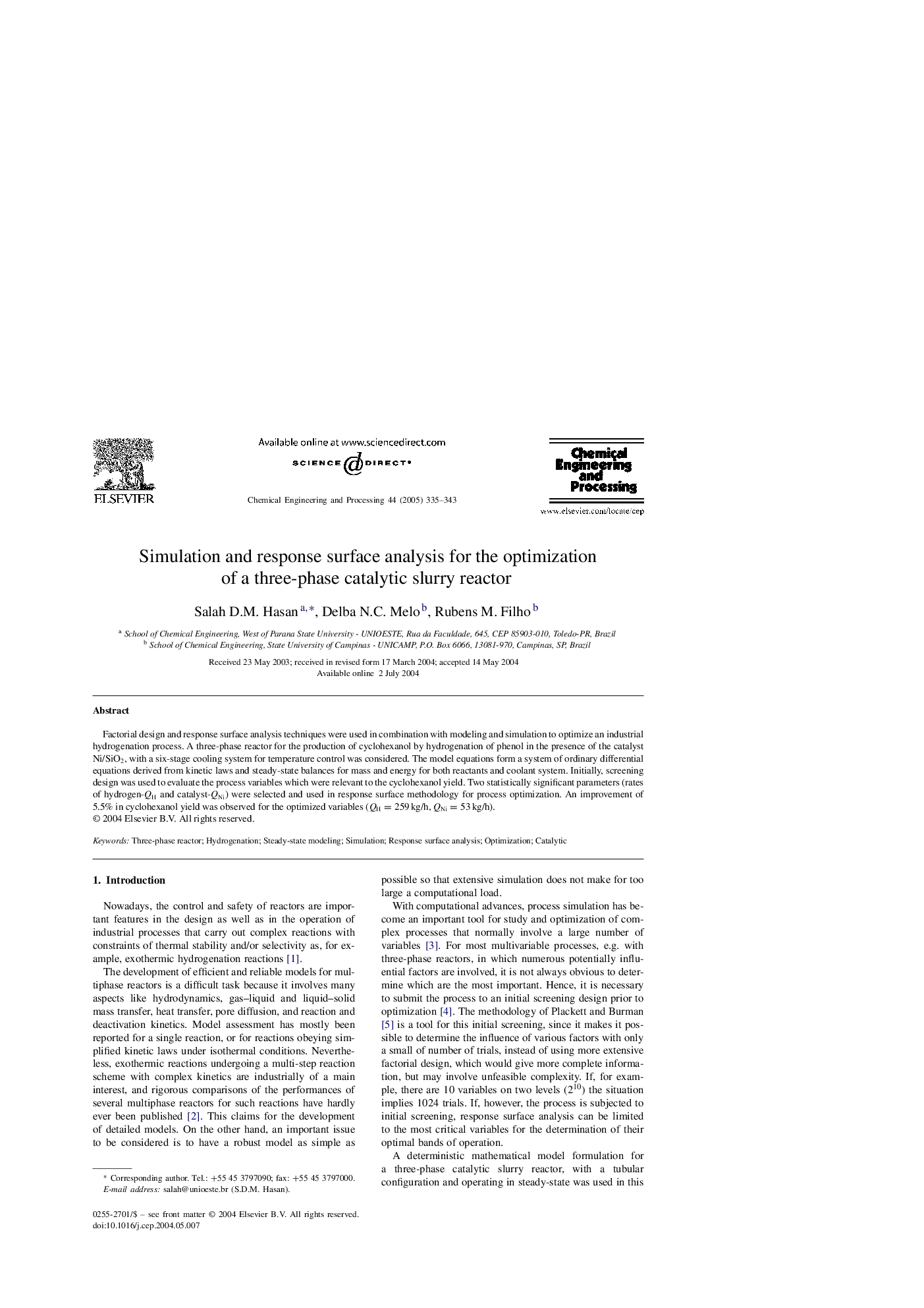| Article ID | Journal | Published Year | Pages | File Type |
|---|---|---|---|---|
| 10396956 | Chemical Engineering and Processing: Process Intensification | 2005 | 9 Pages |
Abstract
Factorial design and response surface analysis techniques were used in combination with modeling and simulation to optimize an industrial hydrogenation process. A three-phase reactor for the production of cyclohexanol by hydrogenation of phenol in the presence of the catalyst Ni/SiO2, with a six-stage cooling system for temperature control was considered. The model equations form a system of ordinary differential equations derived from kinetic laws and steady-state balances for mass and energy for both reactants and coolant system. Initially, screening design was used to evaluate the process variables which were relevant to the cyclohexanol yield. Two statistically significant parameters (rates of hydrogen-QH and catalyst-QNi) were selected and used in response surface methodology for process optimization. An improvement of 5.5% in cyclohexanol yield was observed for the optimized variables (QH = 259Â kg/h, QNi = 53Â kg/h).
Keywords
Related Topics
Physical Sciences and Engineering
Chemical Engineering
Process Chemistry and Technology
Authors
Salah D.M. Hasan, Delba N.C. Melo, Rubens M. Filho,
